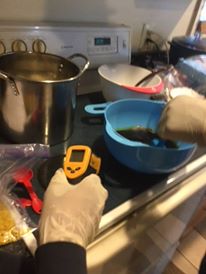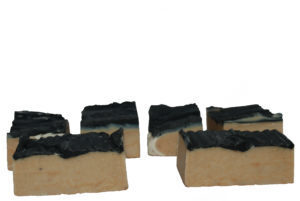Last weekend,

I invited a friend over to the house and showed them how to make cold processed soap. They left my home with two silicone soap molds full of raw soap and… my first soap cutter! Now if they want to continue making soap, they have two soap molds and a soap cutter. I did have another soap mold on hand in case those two molds couldn’t hold all of the soap batter and I was able to fill my smallest soap mold to the halfway mark. It gave me six bars of soap.

The soap was ready to release from its mold in less than 24 hours. This soap did have some soap ash on it and I might remove it at some point, but most likely not since these will be kept at home. Within the next few days, I’ll be making a large batch of cold processed soap. My 14-year-old daughter will be helping me create this soap. I’m still unsure of what ingredients will go into the soap, but I do know that at least two of the ingredients will have coconut oil and castor oil.
When it comes to soapmaking, typically the list of ingredients that I use for each soap recipe is small. I find that even with such a small list, that the soap usually does what it’s supposed to do. It cleans, conditions some have more bubbles/lather than others, but that’s by choice. For myself, knowing what each ingredient does and how they work well together is much better than trying a variety of ingredients that I’m unsure of how they’ll work when combined with each other. Typically, I let my soap cure for at least two months before I give it to others. Recently, the cure time has been much longer. I think it’s been about four months for the last large batch of soap that I’ve made, and I must say that I’m really enjoying the longer cure time since it’s given me a much harder and drier bar of soap.